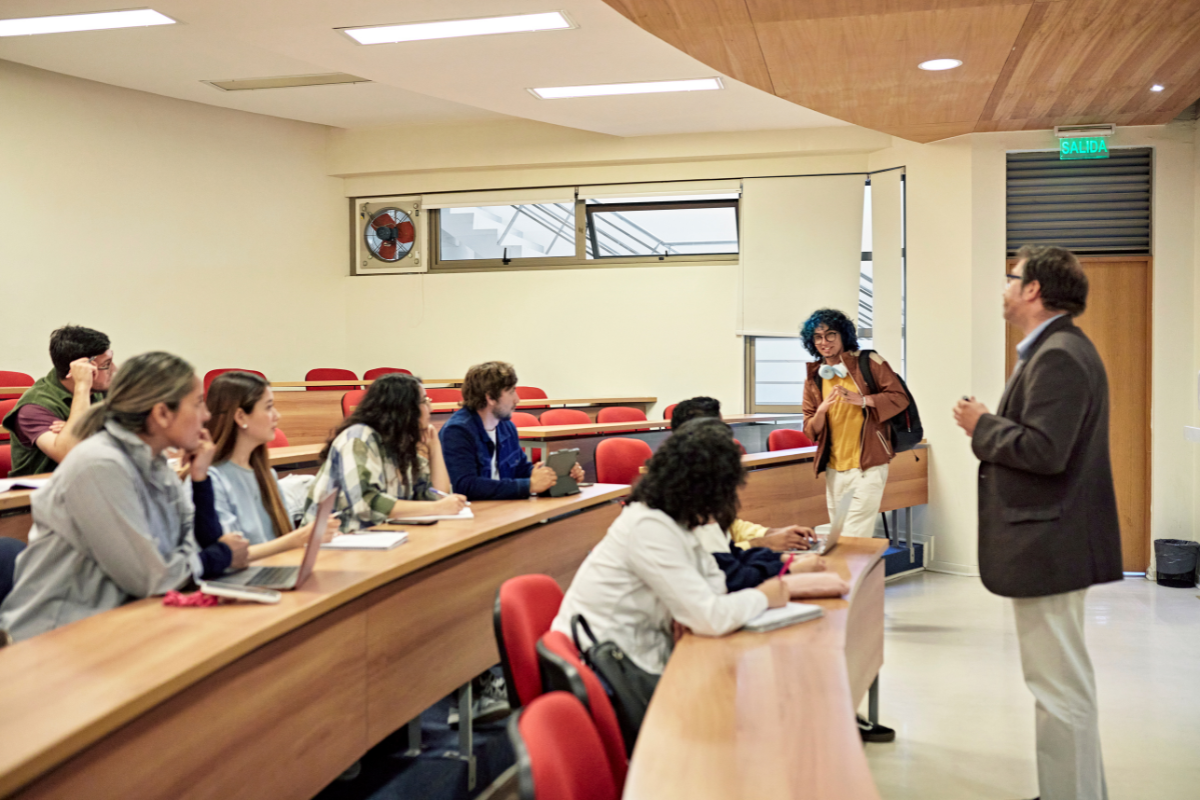Imagine a student entering a classroom after the lesson has begun. Instead of looking for the most comfortable seat or waving loudly at their friends, they’ll likely try to make as little noise as possible and quietly take the first available seat. This everyday behaviour reflects something deeper: an intuitive, unspoken understanding of what the situation calls for.
But how do we make sense of these subtle and often ambiguous norms from a cognitive science perspective? In her doctoral research, Giulia Di Rienzo explored this question by investigating how our sense of normativity emerges from a situated ability to sense what is better or worse, more or less appropriate, in a given context. (Text: Giulia Di Rienzo)
Contexts Beyond the Brain
Traditional cognitive science often explains sensitivity to social norms as the result of computations happening inside the brain. Giulia Di Rienzo’s research takes a different path. She explores how our minds emerge through our material and practical actions in everyday life, rather than assuming them to be something inside our brains representing the world around us. Drawing on radical embodied cognition, she examines how we respond to what the environment offers. All the different opportunities for action (“affordances”) use skills shaped by context and experience.
“If we aim to move beyond traditional cognitivist perspectives toward a world-involving view of cognition,” Giulia writes, “we must ensure that this ‘every-thing’ is genuinely engaged, not merely invoked as a conceptual backdrop or relegated to an afterthought.” For her, philosophical inquiry begins with the real-world practices. That’s why this thesis explores what ethnography, the close observation of people’s everyday activities, can offer to philosophical psychology.
Science lab vs. maker space
To explore these questions, Giulia conducted ethnographic fieldwork in two distinct settings. The first is a human movement science laboratory. Here, she observed how the lab’s layout, tools, and routines encouraged people to act following certain normative constraints. She treated the lab as a “behaviour setting”, a structured environment where materials and practices are tightly organised to afford particular activities and not others. For example, if a cup affords being grasped, a cup of coffee during a work interview affords being grasped in particular ways. Her results show that we are sensitive to how possibilities for action are organised in the environment, in specific and normative ways.
In her second study, she looked at a maker space and paid attention to how the environment invited technicians to take care of tools and materials so that they are perceived as available and usable by the makers using the space. This challenges the idea that actions, like picking up a cup, are fixed options we just select from. Instead, what we can do depends on the situation and how people, tools, and materials are organised together in space and time.


